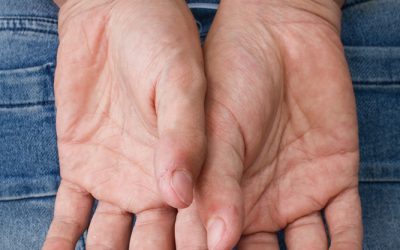Nicotine addiction, despite a decline in smoking rates, still impacts 12.5% of U.S. adults as of 2020. Recognizing addiction as a disease has profound implications for how we approach treatment. It shifts the focus from punishment to healing, from moral judgment to medical intervention. This paradigm shift opens up new avenues for treatment that address the biological, psychological, and social aspects of addiction.
What Are the Symptoms of Drug Addiction?
The opposing views of drug addiction being a disease or a choice often transcend individual beliefs and spark discussions that bring perspectives from both opposing sides. To gain a holistic perspective on this topic, you must consider the diverse factors contributing to addiction and the various viewpoints on how to classify it. It’s a complex condition that develops over time, shaped by a mix of biology, environment, mental health, and brain chemistry. Some people are more likely to become addicted than others, but it can happen to anyone. It can make it hard to stop using a substance, even when it starts to cause problems in your life.

Find Treatment Near You
- For instance, the perception of addiction as a brain disease might lead to the stigmatization of individuals with addiction as biologically different or ‘damaged’.
- The law of unintended consequences applies to everything, including these models.
- When the intended patient self-medicates, they are not only making underlying symptoms worse; they are not fixing the problem.
Attempts to resist these compulsions result in increasing and ultimately intractable anxiety 99. This is in important ways different from the meaning of compulsivity as commonly used in addiction theories. In the addiction field, compulsive drug use typically refers to inflexible, drug-centered behavior in which substance use is insensitive to adverse consequences 100.
Painkillers: Addiction Signs & Symptoms and Withdrawal Timeline
- For a list of resources on drug addiction, visit our article on resources for drug addiction.
- Addiction affects relationships and society by causing family breakdown, job loss, financial strain, increased crime rates, and homelessness.
- For example, Biden wanted to rename NIDA (National Institute on Drug Abuse) as the National Institute on Diseases of Addiction and the NIAA (National Institute on Alcohol Abuse) as the National Institute on Alcohol Disorders and Health.
- States that it does not matter what caused it and that there is a solution to address and fix it.
- Sociodemographic risk factors related to poverty, geography, family, and peer groups also influence the onset and course of substance and non-substance addiction.
Addiction is defined as a disease by most medical associations, including the American Medical Association and the American Society of Addiction Medicine. Our skilled team combines expertise from various fields to provide comprehensive and effective care. The annual ‘economic burden’ of alcohol and illicit drug misuse in the US is estimated to be $442 billion. Opioids are narcotic, painkilling drugs produced from opium or made synthetically. This class of drugs includes, among others, heroin, morphine, codeine, methadone, fentanyl and oxycodone. Stimulants include amphetamines, meth amphetamine addiction treatment (methamphetamine), cocaine, methylphenidate (Ritalin, Concerta, others) and amphetamine-dextroamphetamine (Adderall XR, Mydayis).
How do behavioral therapies treat drug addiction?
Much of the argument that addiction is a choice stems from misconceptions about the types of people who suffer from addiction. This is tied to the stigma of addiction, which developed as a result of the individuals who were affected by addiction, such as people from specific social classes or ethnicities. Throughout history, substance abuse was most common among “lesser” classes and people with lower levels of education. Recent studies over the past couple decades have brought evidence what does drug addiction mean to question that understanding, and now the nature of addiction has become a common point of debate among specialists and the public itself.

Intoxications go hand-in-hand with addictions as they can either be the subject of the addiction or the propelling factor toward behavioral disruptions and suicidal tendencies. Further management involves monitoring and maintaining the patient’s vital signs. This is dependent on the stage of presentation of the patient and the subject of the addiction. Multiple pharmacological treatments are available for the 2 most common substance addictions (tobacco and alcohol), such as group meetings and psychological and social support. Preclinical research has https://ecosoberhouse.com/ shown that stress exposures, especially in early life with child maltreatment and regular adversity, enhance drug self-administration and precipitate many relapses in individuals with addiction.
Enhancing Healthcare Team Outcomes
Interestingly, this neurological upheaval doesn’t affect everyone equally. Some people seem more susceptible to addiction than others, and this is where genetics come into play. Research suggests that genetic factors can account for about 40-60% of a person’s vulnerability to addiction. It’s like some people are born with kindling in their brains, just waiting for a spark to ignite. Different types of medications may be useful at different stages of treatment to help a patient stop abusing drugs, stay in treatment, and avoid relapse. Additionally, medications are used to help people detoxify from drugs, although detoxification is not the same as treatment and is not sufficient to help a person recover.
Personalized Care
Sometimes called the «opioid epidemic,» addiction to opioid prescription pain medicines has reached an alarming rate across the United States. Some people who’ve been using opioids over a long period of time may need physician-prescribed temporary or long-term drug substitution during treatment. Some commonly inhaled substances include glue, paint thinners, correction fluid, felt tip marker fluid, gasoline, cleaning fluids and household aerosol products. Due to the toxic nature of these substances, users may develop brain damage or sudden death. As your drug use increases, you may find that it’s increasingly difficult to go without the drug. Attempts to stop drug use may cause intense cravings and make you feel physically ill.
Have questions or need support?
As a service to our readers, Harvard Health Publishing provides access to our library of archived content. It would take many blog posts to summarize in detail what goes on in the article (let alone the brain), so I’ll hit the points that are most meaningful to me as a practitioner and citizen — and forgive me if I get a little personal. Just a little over a decade ago, Senator Joe Biden introduced the Recognizing Addiction as a Disease Act of 2007. Biden proposed rewriting language commonly used by lawmakers and the government when discussing addiction. For example, Biden wanted to rename NIDA (National Institute on Drug Abuse) as the National Institute on Diseases of Addiction and the NIAA (National Institute on Alcohol Abuse) as the National Institute on Alcohol Disorders and Health.
